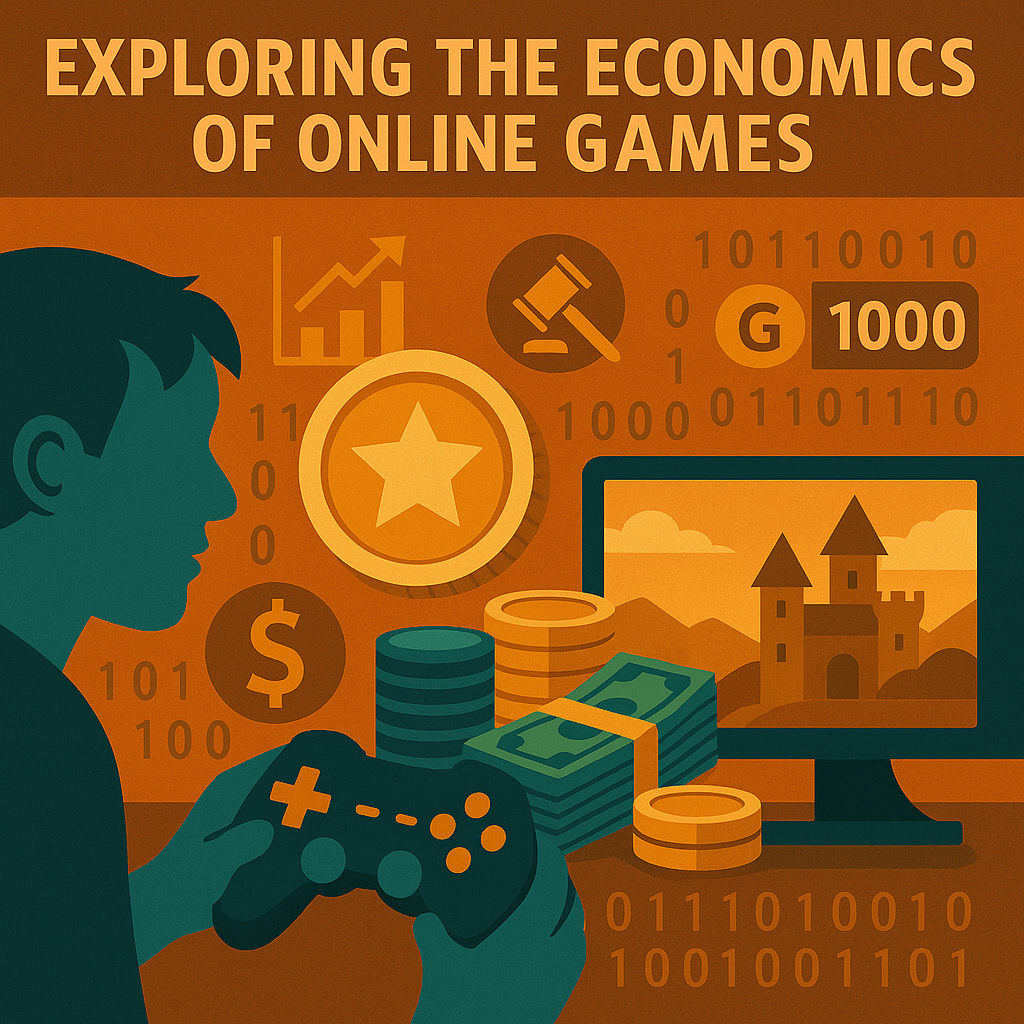When most people think of video games, they picture action, adventure, and entertainment. But behind the screens of today’s most popular online games lies something far more complex and fascinating: fully functioning economies. In-game currencies, trading systems, and virtual marketplaces now mirror—and sometimes influence—real-world economics.
At our official platform for digital trends and gaming insights, we take a deep dive into how online game economies work, what makes them thrive or fail, and why understanding them matters for both players and developers.
An in-game economy refers to the systems within a game that allow players to earn, trade, and spend virtual goods or currencies. Just like in real life, these economies involve supply and demand, resource management, and value exchange.
Common features include:
- Currencies (gold, credits, coins, gems)
- Resources (materials, energy, time)
- Items (weapons, armor, cosmetics)
- Markets (auction houses, player-to-player trades, NPC shops)
These economies are often created intentionally by game developers—but once the players get involved, they evolve in unexpected ways.
Most online games feature one or more currencies:
- Soft Currency – Easily earned through gameplay (e.g., gold in World of Warcraft).
- Hard Currency – Usually purchased with real money (e.g., V-Bucks in Fortnite).
- Premium Items – Rare or exclusive goods that may have a fixed price or variable market value.
- Crafting Materials – Items used to build or enhance other items, often central to player-driven economies.
Balancing these currencies is key to a healthy economy. If one becomes too easy or too hard to earn, inflation or imbalance can ruin the experience.
Some games include structured marketplaces, while others rely on informal systems or third-party platforms.
Examples:
- Runescape’s Grand Exchange – A central trading hub with real-time price trends.
- Steam Marketplace – Where items from games like CS:GO or Dota 2 are bought and sold for real money.
- Diablo III (now retired) – Once featured a real-money auction house, sparking ethical debates.
These marketplaces can become incredibly active. Prices fluctuate based on demand, rarity, and even global player behavior (like a new patch or event).
Modern games often blur the line between virtual and real-world economies through microtransactions, loot boxes, and in-game purchases.
Players can:
- Buy exclusive skins or gear
- Exchange real money for in-game currency
- Sell rare items (in some games) for real-world profit
While this can be exciting, it also raises concerns about fairness, addiction, and “pay-to-win” mechanics. A strong in-game economy should reward time and skill—not just spending.
Some online games have grown so large that their economies are studied by economists and universities.
EVE Online, for example, is known for its complex economy where players mine resources, manufacture ships, and manage corporations. The game even hired a real-world economist to oversee its systems.
Interesting parallels include:
- Inflation – If gold floods a game, prices rise and value drops.
- Scarcity – Limited resources create demand and competition.
- Supply Chains – Players create, transport, and sell goods across virtual regions.
These simulations can reflect actual economic principles and offer lessons in finance, trade, and strategy.
Game developers play a critical role in managing virtual economies. Too much freedom can lead to exploitation; too many restrictions can frustrate players.
Tools used include:
- Currency sinks – Systems that remove money from circulation (e.g., repair costs, taxes).
- Caps and limits – To prevent hoarding or inflation.
- Dynamic pricing – AI adjusts NPC prices based on player behavior.
- Event-based resets – Seasonal updates to refresh supply and demand cycles.
Balancing an in-game economy is like managing a living organism—it requires constant attention and adaptation.
In-game economies don’t stay in-game anymore. Entire industries have formed around them:
- Gold farming – Players (often in developing countries) earn in-game currency to sell for real money.
- Skin trading – Rare cosmetic items are sold for hundreds or even thousands of dollars.
- Streaming and esports – In-game wealth adds value to public profiles and sponsorships.
This raises legal and ethical questions about labor, taxation, and ownership. Are virtual goods really yours? Can you legally sell them? The answers vary by game and jurisdiction.
Online game economies are no longer just fun add-ons—they are dynamic, complex systems that reflect real economic behaviors and challenges. They shape how players interact, how value is created, and how digital experiences evolve over time.
Whether you’re a casual gamer, aspiring developer, or just curious about the future of virtual commerce, understanding in-game economics offers insights into both gaming and real-world markets.
At our official platform, we believe the line between games and reality is getting thinner—and that’s a world worth watching, playing, and learning from.
